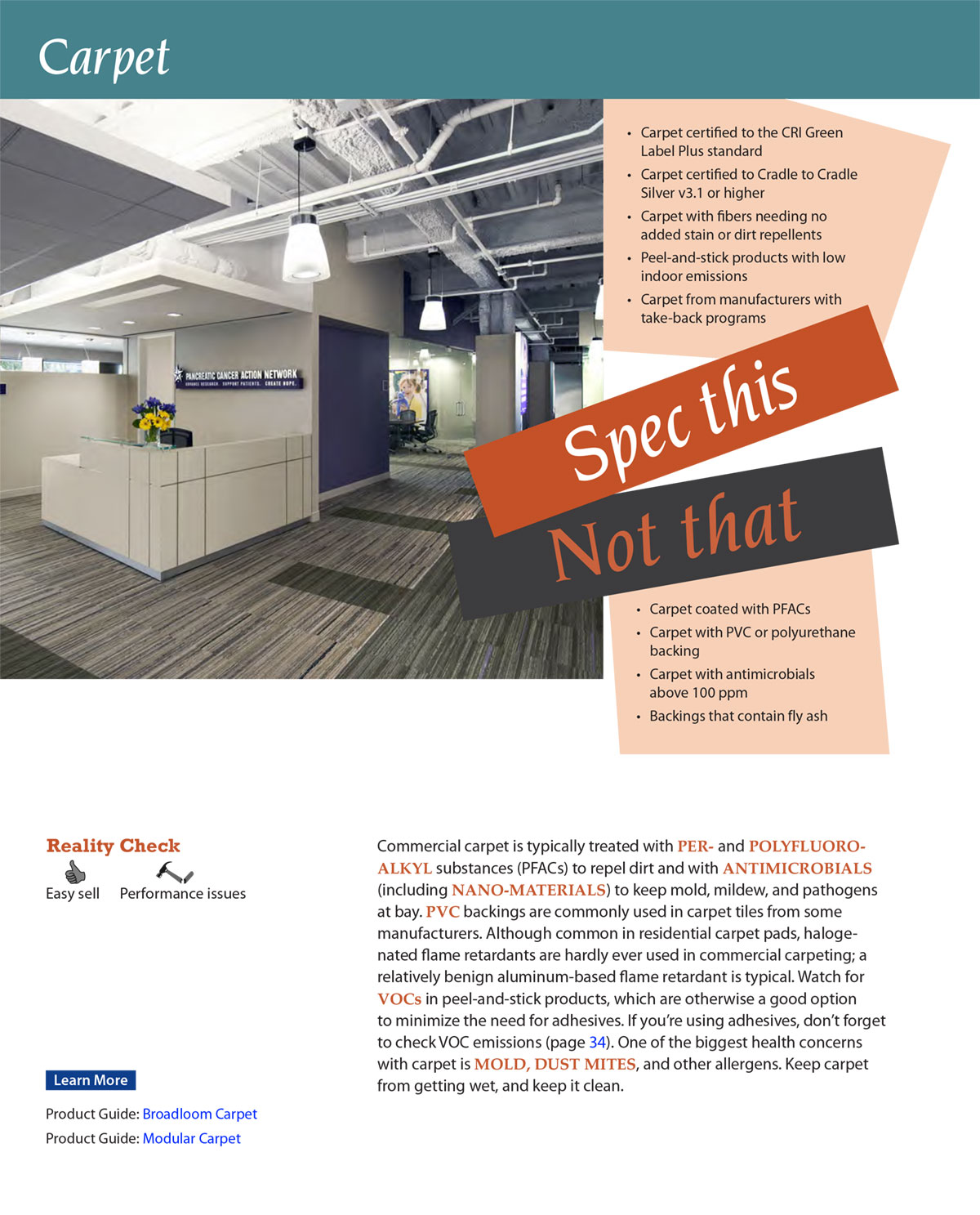Spec This Not That Report - Special Offer
With this special offer, you’ll get the Spec This Not That Report at the reduced price of $89, a $40 savings.
Avoiding Toxic Chemicals in Commercial Building Projects
Can furniture be hazardous? You bet it can…
From flame retardants in foam cushions to unnecessary stain and dirt repellents on upholstery materials, everyday office furniture often comes with troubling human health concerns.
And furniture is only the tip of a very toxic iceberg of hazards you need to watch out for when specifying building products and materials—starting with your building envelope … and all the way in to your interior finishes.
Yet designers and specifiers from numerous leading firms are figuring out that it is possible to identify healthier products and materials and still create gorgeous, energy-efficient, occupant-friendly buildings—without busting budgets or getting overwhelmed by complex health and chemical data.
Get the Spec This Not That Report for $89 »
A handbook of common hazards — and how to keep them out
Building on a guide first published in 2012, this special report, Spec This, Not That, details approaches used by architects, designers, contractors and building owners to reduce chemical hazards in their building projects.
We added our expert writers’ at-your-fingertips insights for designers and spec writers on which hazards to watch out for in the major building product and material categories.
Grab Essential Rules of Thumb
In a hurry? Part 1 of Spec This, Not That offers quick takes, revealing exactly what to select and what to avoid in each product category.
Ready to go deeper? Gain specialized knowledge with expertise on:
- The 6 major types of chemicals to avoid
- A quick reference guide to 33 common hazards
- A course in “Toxicology 101”
- Rich, informative explanations of the dangers of specific chemical categories—like VOCs, persistent organic pollutants, and nanomaterials
- The skinny on decision-making resources, like red lists, product certifications, and HPDs
Now, take it to the real world. Four case studies go in-depth on how project teams approached the problem of toxicity—setting priorities, developing plans, and ultimately implementing their own guidelines for avoiding hazards.
As an added bonus, this report has been approved by AIA and GBCI for 3.5 continuing education credits.
Whether you’re looking for the skim or the deep dive, this special report from BuildingGreen is an essential resource for project teams navigating the murky waters of avoiding toxic chemicals.
Sample page:



